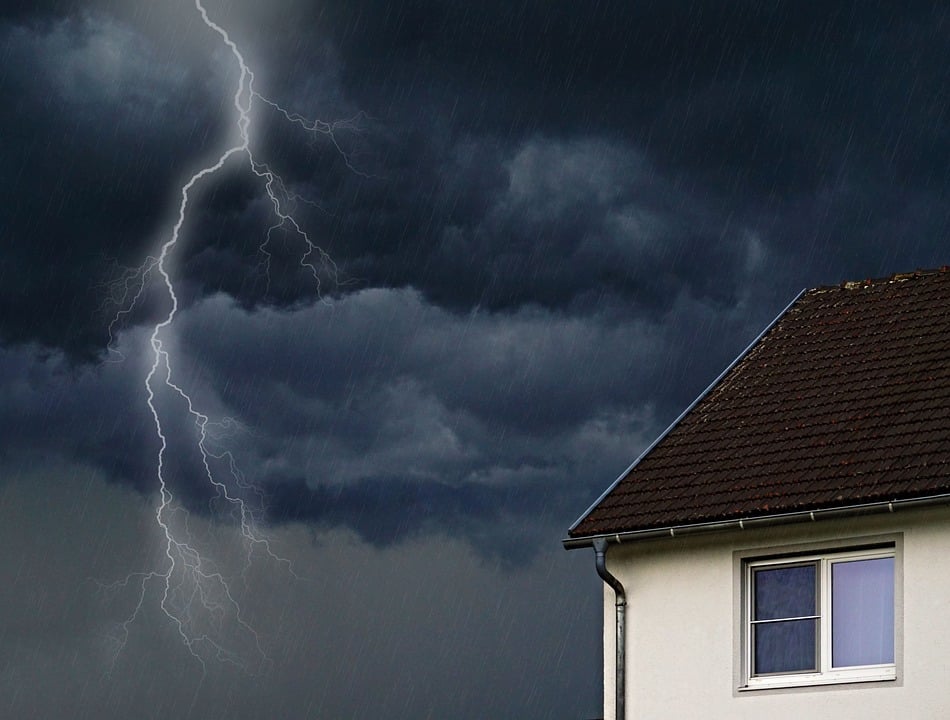During 2018, Utah experienced many wildfires that threatened people and structures. While the immediate fire danger is now over, it doesn’t mean that the effects of the disaster won’t have an impact in the future.
Damage caused by these wildfires could create potential risks for homes and other structures in the spring because of the way that they alter the forest canopy and floor. Because there aren’t plants absorbing water and no plant roots are holding onto the soil, the chances of a landslide or flooding increase significantly for areas downhill from lands ravaged by fire. Rapid snowmelt and heavy rain can contribute to the possibility of these disasters happening, not just in the year following the fires, but for many years to come.
While you can’t predict a landslide or flooding, it’s crucial for people living in communities near lands affected by wildfires to prepare for a potential disaster. Doing this is especially vital for people who live near mountainous areas. Taking preventative steps for these types of disasters can be the difference between life or death.
Here are some precautions people living in affected areas should take to protect their property and lives:
Evaluate the risks — Since there’s already been a wildfire, you know that there are increased risks for landslides or floods. However, it’s essential to evaluate the risk to your property based on where your home is located. If you live right next to the mountains, your risk for landslides would be higher than if you live farther away from the mountains. If you live near any rivers or streams, you may find yourself more at risk for a flood.
Additionally, if your home is near a canyon or other geological formations that exhibit localized signs of erosion, sediment, or water flow, your home may be at greater risk as well. Taking a look at the geology surrounding your home can give you an idea of what kind of disasters might affect your property.
Mitigate the risks — While there’s no way to eliminate flooding or landslide risks entirely, there are some things you can do to help lessen potential damage. If you’re on or near a hill or mountainside, building a retaining wall on the side of your home near the mountain can help redirect the flow of debris or mud in the event of a mudslide or rockslide.
You should also make sure your home is prepared as much as possible for a potential flood. Keeping drains and gutters free of leaves and other debris can decrease your home’s risk of localized flooding. You can also utilize sandbags to protect your home.
Finally, you should make sure that your home’s furnace, water heater and electrical panel are above flooding level. If you have any valuables in lower levels of the house, consider moving them to higher floors so they won’t be lost or damaged in the event of a flood or landslide. You should also safeguard important documents by putting them in a waterproof safe.
Recognize the signs of a potential disaster — If you’ve determined your home is at a higher risk for flooding or landslides, it’s crucial to watch for signs of these natural disasters. Flooding can happen fast, so it’s important to pay attention to flood warnings and take immediate action when the warnings are reported.
Landslides, however, are a different story. While a landslide warning may not be announced, you should be able to see signs that trouble is imminent. Small slides and land movement indicate that even bigger landslides may be in the works. If you see cracks in your home’s foundation, plaster, or tile, it may be a subtle hint that the earth around your house is moving. Additionally, if fences, utility poles, or trees move or appear to be tilting, a landslide is probably coming.
Plan an evacuation route — Before a flood or landslide occur, you need to make sure that you have an evacuation plan in place. For flooding, it’s essential to get to higher ground, while for landslides you should get out of the way of any debris flow. If you have a family, make sure you have a plan for what you will do if these disasters occur while everyone is home, or if family members are away at school or at work.
Emergency supplies — When disasters strike, it’s difficult for families to get needed food and supplies. Make sure that you have supplies handy and in kits that you can quickly grab in case you need to leave your home. Ensure that you have fresh water, as well as food items that aren’t expired.
Check your insurance coverage — Before a disaster occurs, make sure your home has insurance coverage for flooding or landslides. These disasters may not be covered by standard homeowner’s insurance. Paying a little extra for this coverage, however, will be well worth it if these catastrophes strike.
Copy important documents — When you’re evacuating, it should be a priority to grab documents like the deed to your home and car and insurance information. Realize, however, that you may not have time to rummage through files for these documents if you are trying to make a quick escape. Make sure that you keep copies of them and save them somewhere that you can access them easily before leaving the house. You might also consider scanning these documents and storing these copies online on a secure cloud platform that can be accessed remotely.
While floods and landslides can be disastrous, preparing as much as possible ahead of time can help you protect your home. Preparation can also be the difference between life or death for you and your family. Remember that while homes and belongings are replaceable, you and your family members aren’t, so make sure your safety is always the top priority, even if that means abandoning your home.

